Published Innovation
0
Journal Papers
0
Patents
0
Conference Papers
Table of Contents
Journal Papers
Journal Papers
2023
2023

Simon Johannes Gräfner, Jeng-Hau Huang, Po-Yi Wu, Vengudusamy Renganathan, Po-Shao Shih, C. R. Kao
Advanced Materials (2023)
Microchannels with integrated pillars have enhanced the production capabilities and performance of various applications due to their high surface-to-volume ratio. However, emerging gas bubbles can become trapped, potentially limiting the functionality or...

Yuan-Jung Chang, Rong-Yeu Chang, and Tim A. Osswald
Physics of Fluids (2023)
Bulk viscoelasticity is not well studied and understood in the field of polymer processing. Its behavior in solid mechanics applications, such as time-dependent bulk modulus and time-dependent thermal expansion, was rarely considered but started to receive attention recently...

Huan-Chang Tseng
Journal of Thermoplastic Composite Materials (2023)
An ear-flow front is discovered in the industrial practice of injection molding, especially for fiber-reinforced composites; the advance of the flow front in the center of the cavity is obviously slower than at the edges. To date, such a peculiar flow has not yet been predicted...

Huan-Chang Tseng
Korea-Australia Rheology Journal (2023)
Interested in the previous work of Walters et al. (Korea Aust Rheol J 21:225–233, 2009) regarding the competing roles of extensional viscosity and normal stress differences in complex flows of elastic liquids, rheological studies rarely discuss the relationship between...

Huan-Chang Tseng
Korea-Australia Rheology Journal (2023)
Vortex growth is related to the extensional thickness viscosity of polymer melts flowing through contractions, whereas the shear thinning viscosity results in no significant vortex. The nonlinearity of extensional viscosity in relation to molecular architectures and additive...

Huan-Chang Tseng
Int Polym Process (2023)
In state-of-the-art predictive engineering software for injection molded fiber composites, it is challenging to discuss the effect of fiber properties, including fiber content and aspect ratio, on the shell-core fiber orientation and anisotropic flow front. Recently, the flow-fiber coupled...

Haoyan Wei, C. T. Wu, Wei Hu, Tung-Huan Su, Hitoshi Oura, Masato Nishi, Tadashi Naito, Stan Chung, Leo Shen
Journal of Engineering Mechanics (2023)
Short fiber reinforced composites (SFRC) are high performance engineering materials for lightweight structural applications in the automotive and electronics industries. Typically, SFRC structures are manufactured by injection molding, which induces heterogeneous...

C.K. Chou, C.T. Wu, L.H. Shen, D.L. Young
Engineering Analysis with Boundary Elements (2023)
The primary objective of this research is to develop a finite volume method that can incorporate the most widely recognized upwind schemes using meshless techniques on an unstructured mesh. The recently developed Meshless Approximation Finite Volume Method (MAFVM)...

Mao-Ken Hsu, Wei Chen, Bo-Yu Huang, Li-Hsuan Shen, Chia-Hsiang Hsu, Rong-Yeu Chang and Chi-Hua Yu
Frontiers in Materials (2023)
In response to the global trend of carbon reduction over the last few years, various industries, including the aviation and automobile industries, have gradually begun research, design, and production of carbon fiber composite materials. These have excellent mechanical properties...

Konrad Rienesl, Philipp S. Stelzer, Zoltán Major, Chih-Chung Hsu, Li-Yang Chang, Kepa Zulueta
Frontiers in Materials (2023)
Injection molded short fiber reinforced components reveal a sound light weight potential with moderate costs and thus are widely used in many demanding engineering applications. The accurate determination of the fiber orientation (FO) is essential for predicting the overall...

Leonhard K. Doppelbauer, Konrad Rienesl, Philipp S. Stelzer, Kepa Zulueta, Li-Yang Chang, Zoltán Major
Composites Part A (2023)
Modeling the compressive behavior of carbon fiber sheet molding compounds (CF-SMC) during processing can be a difficult task. This is due to the pronounced porosity of SMC materials, which cannot be adequately reproduced by currently available compressibility models...

Huan-Chang Tseng
Int Polym Process (2023)
In capillary rheometry of a polymer melt, the total pressure drop consists of three primary components: shear viscosity, extensional viscosity, and normal stress differences. Traditionally, viscoelastic constitutive equations have been used to produce accurate predictions...

Huan-Chang Tseng
Int Polym Process (2023)
A modified White-Metzner viscoelastic constitutive equation is incorporated into the state-of-the-art Three Dimensional Computational Fluid Dynamics (3D-CFD) framework for performing isothermal and non-isothermal entry flow simulations of a polymer melt. As a result...

Huan-Chang Tseng
Int Polym Process (2023)
The famous informed isotropic (IISO) viscosity successfully dominates the broader core structure of fiber orientation distributions for injection-molded long fiber composites, due to the flow-fiber coupling effect of stretching deformation. Recently, the GNF-X...

Yu‑Ho Wen, Chen‑Chieh Wang, Guo‑Sian Cyue, Rong‑Hao Kuo,· Chia‑Hsiang Hsu, Rong‑Yeu Chang
Rheologica Acta (2023)
Extensional rheology of a variety of linear and branched polymer melts is investigated using entry flow measurements and 15:1 axisymmetric contraction flow simulations. Using a Cogswell model analysis, we show that log−log plots of entrance pressure drop versus wall...

Simon Johannes Gräfner, Jeng-Hau Huang, Vengudusamy Renganathan, Po-Yu Kung, Po-Yi Wu, C.R. Kao
Chemical Engineering Science (2023)
The trend of chip-packaging in the semiconductor industry is pointing towards 3D integrated circuits and scaling down to attain devices with enhanced efficiency and performance. To overcome the reassimilating challenges, we propose the usage of an electroless plated...
2022
2022

Huan-Chang Tseng
International Polymer Processing (2022)
It is difficult to directly measure the steady extensional viscosity of thermoplastic composite materials, especially at high extension rates. The famous Cogswell method was derived analytically from the pressure drop of entrance flow in commercial capillary rheometers for...

Huan-Chang Tseng
International Polymer Processing (2022)
Extensional flows generally take place in a channel with varied cross-sectional areas. During polymer processing with a variety of complex geometric features, it is difficult to separate extensional rates from shear rates in state-of-the-art predictive engineering tools of...

Huan-Chang Tseng
International Polymer Processing (2022)
The corner vortex phenomenon occurring in entry flow is relevant to both polymer rheology and polymer processing. The famous viscoelastic constitutive equations in numerical computations of fluid mechanics have always had limited relevance at low apparent shear rates...

Huan-Chang Tseng
Journal of Non-Newtonian Fluid Mechanics (2022)
On pursuing the seminal work of Jeffery's orbit (1922), the pioneering rheologists were inspired to originate modern suspension rheology in a fiber-filled viscous fluid. Understanding the flow-induced orientation distribution within fiber-reinforced thermoplastics (FRT) composites is...

Wei Qi, Tzu-Heng Chiu, Yi-Kai Kao, Yuan Yao, Yu-Ho Chen, Hsun Yang , Chen-Chieh Wang, Chia-Hsiang Hsu, and Rong-Yeu Chang
Polymers (2022)
To meet the expectation of the industry, resin transfer molding (RTM) has become one of the most promising polymer processing methods to manufacture fiber-reinforced plastics (FRPs) with light weight, high strength, and multifunctional features. The permeability and porosity...
2021
2021
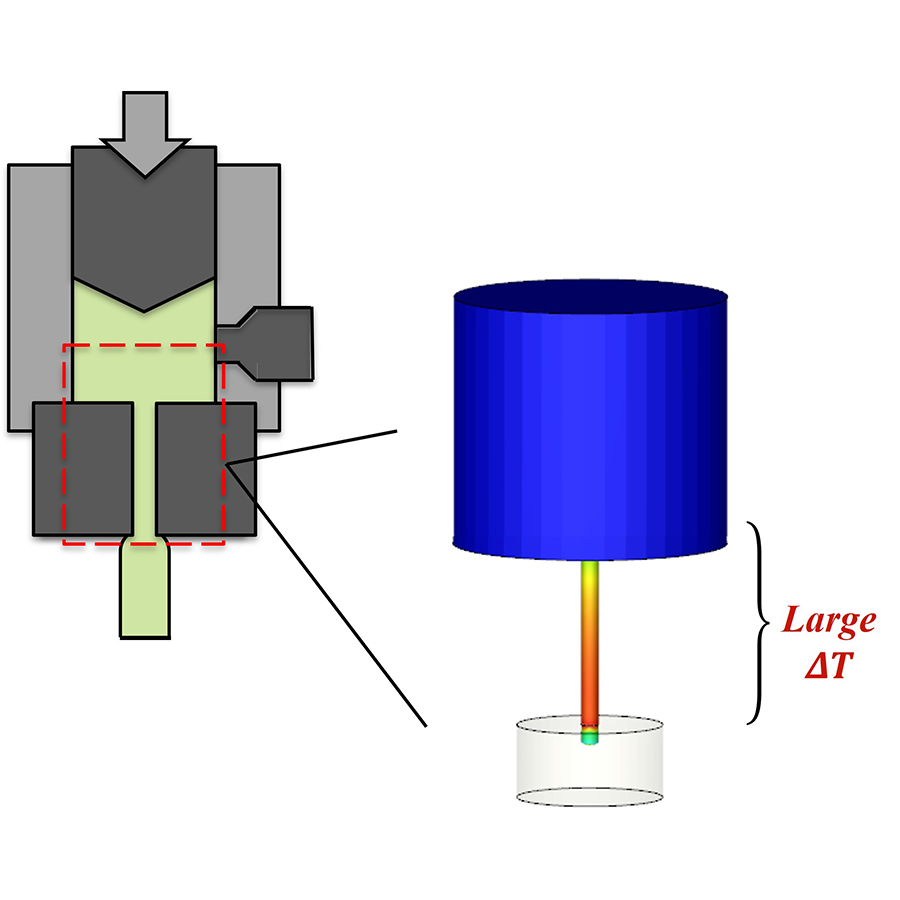
Yu-Ho Wen, Chen-Chieh Wang, Guo-Sian Cyue, Rong-Hao Kuo, Chia-Hsiang Hsu and Rong-Yeu Chang
Polymers (2021)
For highly viscous polymer melts, considerable fluid temperature rises produced by viscous heating can be a disturbing factor in viscosity measurements. By scrutinizing the experimental and simulated capillary pressure losses for polymeric liquids, we demonstrate the importance...
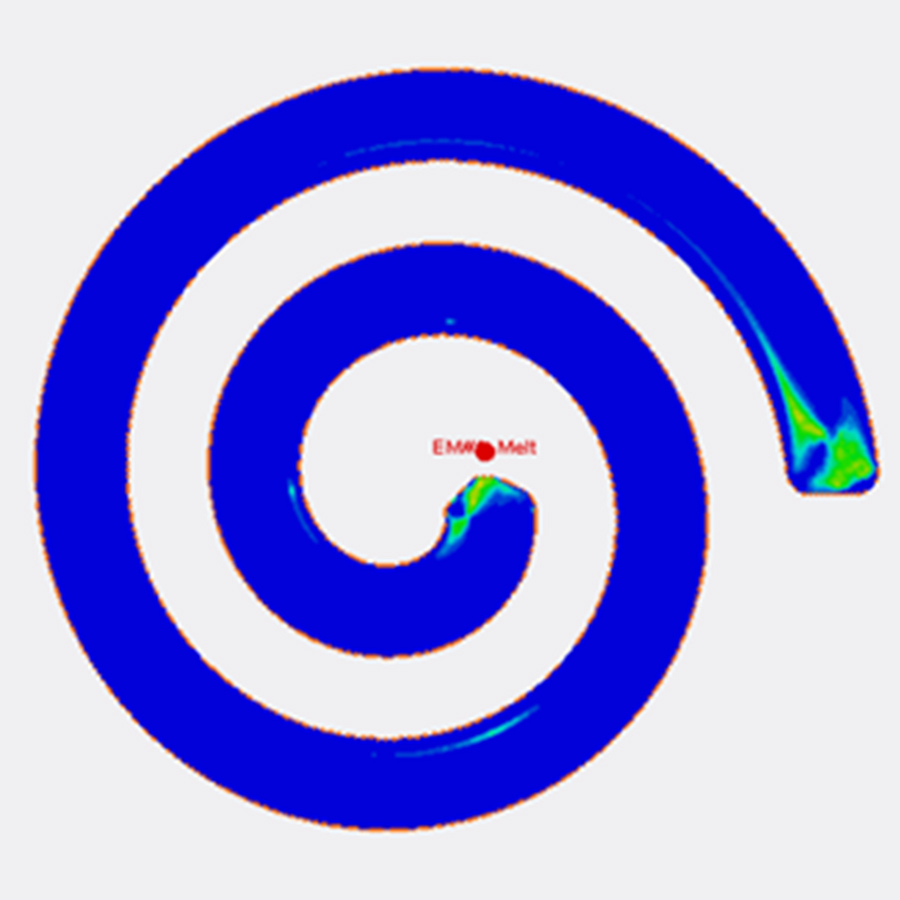
Huan-Chang Tseng
Physics of Fluids (2021)
A viscosity overshoot of fibers filled in a polymer melt under a shear flow is much tougher to predict via the existing constitutive equations of suspension rheology in a viscous media, owing to the effect of fiber orientation on the viscoelastic behavior. The WMT-X (White–Metzner...
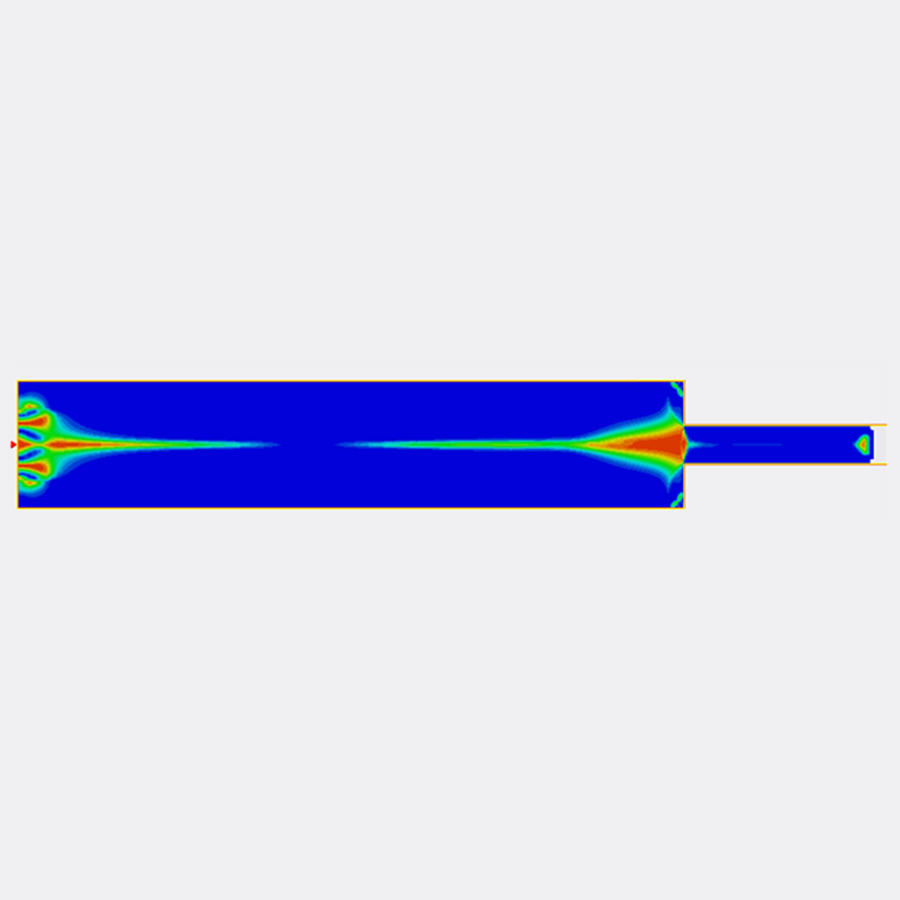
Huan-Chang Tseng
Physics of Fluids (2021)
Predicting a transient stress overshoot for polymer melts under startup shear flow is challenging. In recent, the classical White–Metzner (WM) constitutive equation of nonlinear viscoelastic fluids was potentially extended. For viscoelastic material functions, the minus...
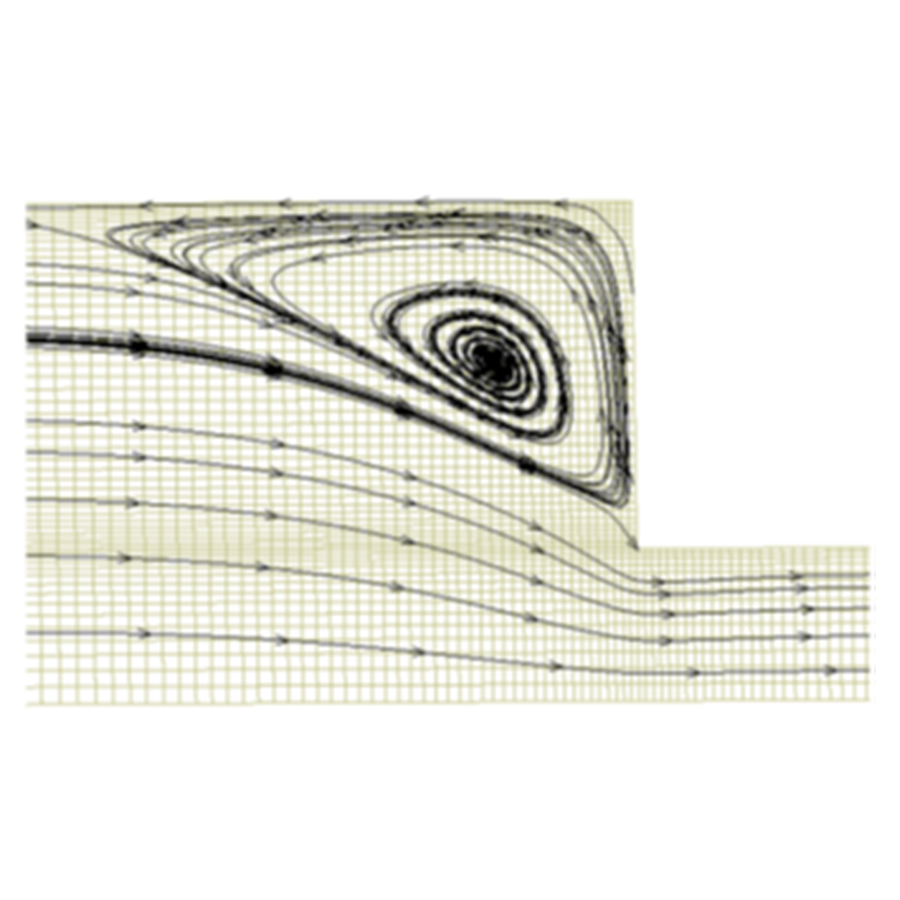
Huan-Chang Tseng
Physics of Fluids (2021)
The famous White–Metzner (WM) constitutive equation expresses a relatively simple nonlinear viscoelastic fluid of polymer melts. However, such a differential stress model, substantial with strong hyperbolic and singular problems, has hitherto always obtained unsatisfactory...
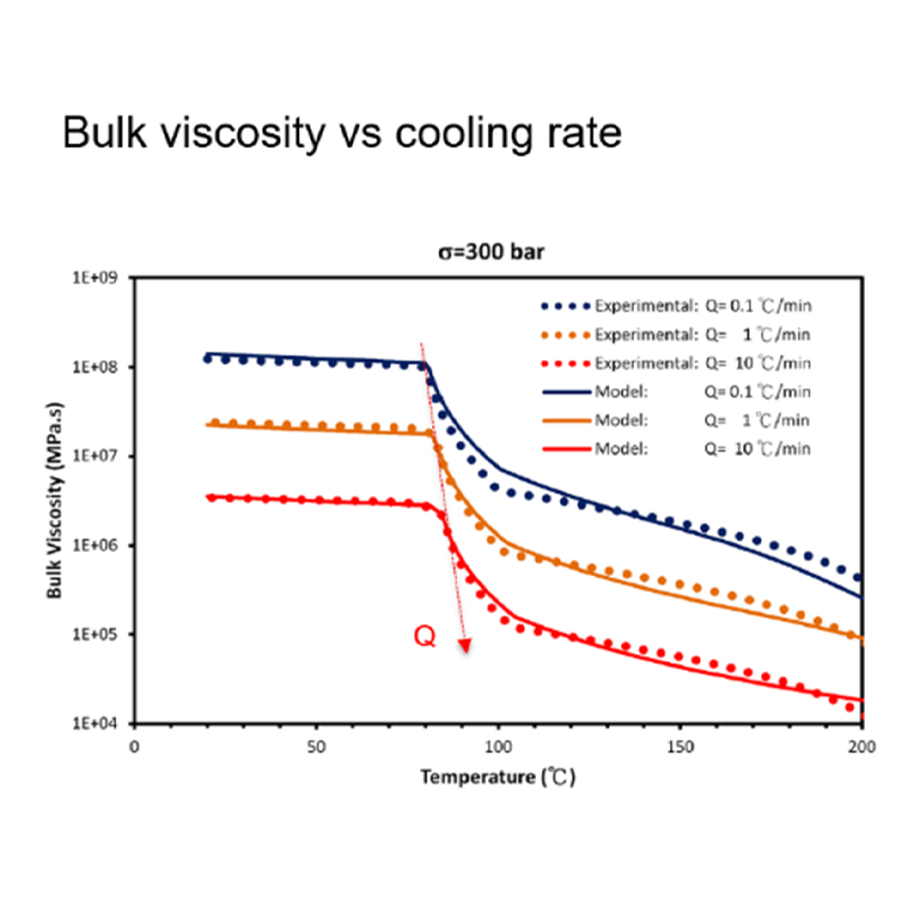
Yuan-Jung Chang, Rong-Yeu Chang, and Tim A. Osswald
Physics of Fluids (2021)
Bulk viscosity describes the irreversible resistance to the rate of volume change. Bulk viscosity, which is more than ten thousand times higher than shear viscosity, has been ignored in the field of polymer processing for the past decades. Bulk viscosity may play an important role for...
2016-2020
2016-2020
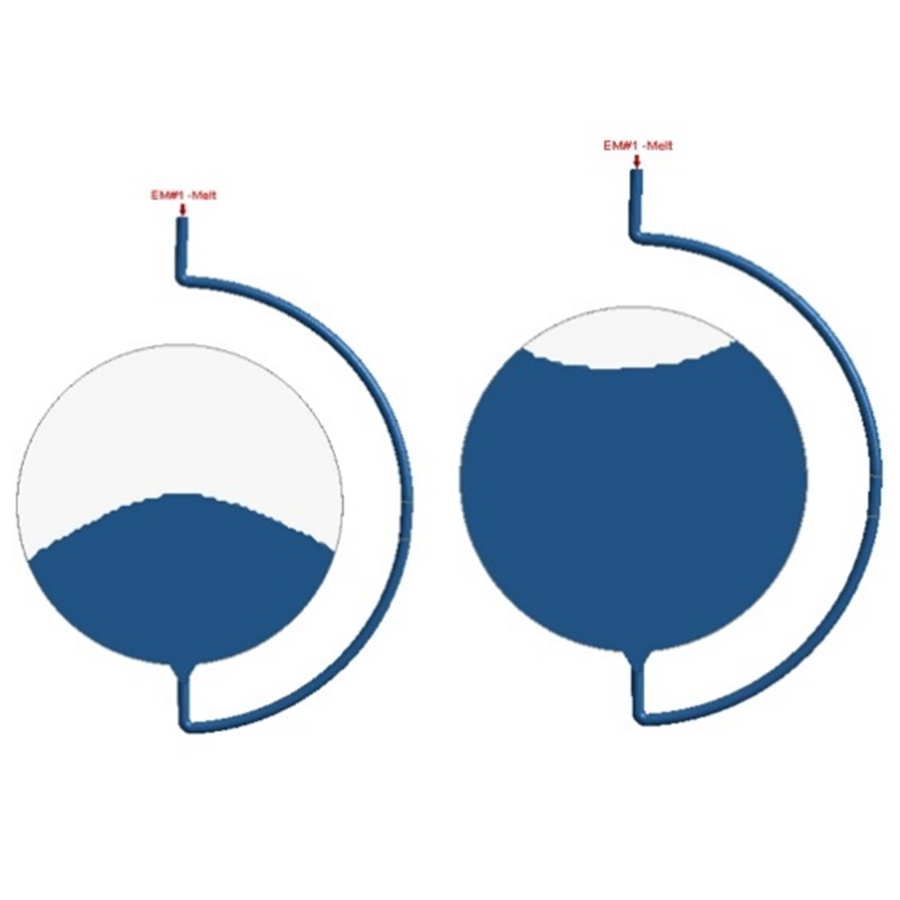
Huan-Chang Tseng
Journal of Rheology (2020)
Creating an entry vortex growth simulation to show viscous and elastic fluid behaviors has always been a major challenge for the computational
rheology of well-characterized polymer melts with extension thickening. For one thing, it is difficult to ensure stable convergence and...
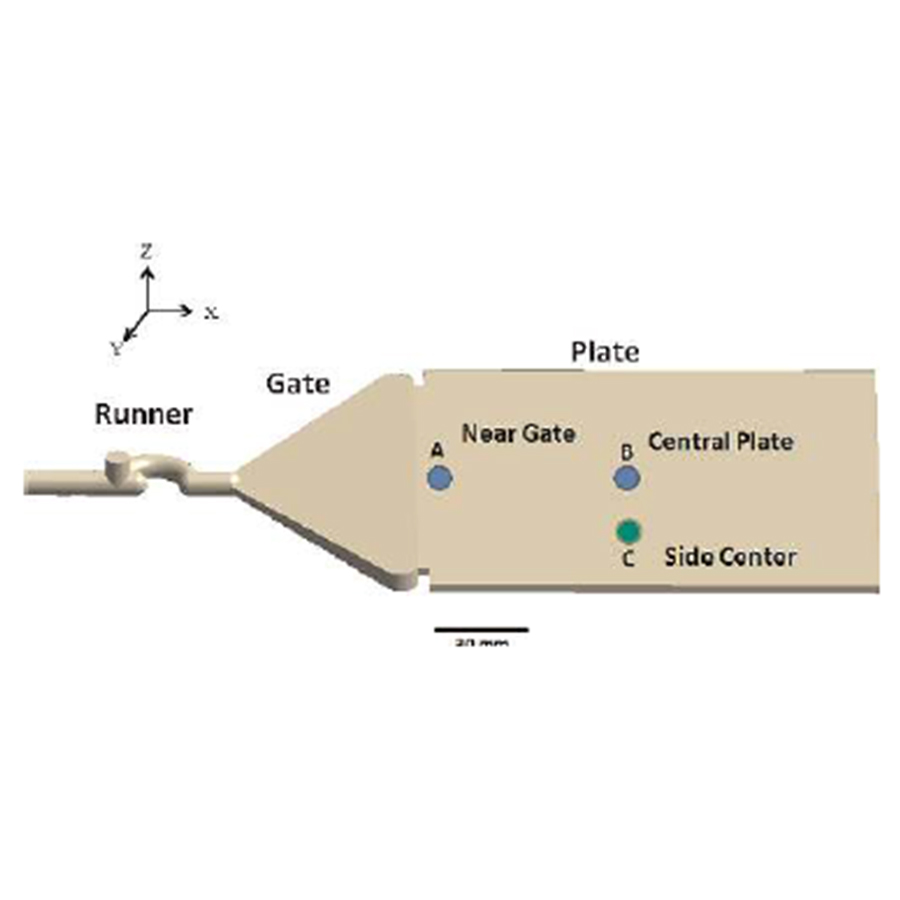
Huan-Chang Tseng , Rong-Yeu Chang and Chia-Hsiang Hsu
Journal of Thermoplastic Composite Materials (2020)
In the structural analysis of automotive products made of lightweight fiber-reinforced thermoplastics (FRT), the primary mechanical requirement is their relation to the orientation states of fibers. The famous Folgar–Tucker equation of fiber orientation has hitherto been...

Yuyang Song, Umesh Gandhi, Takeshi Sekito, Uday K. Vaidya, Jim Hsu, Anthony Yang and Tim Osswald
Journal of Composites Science (2018)
Its high-specific strength and stiffness with lower cost make discontinuous fiber-reinforced thermoplastic (FRT) materials an ideal choice for lightweight applications in the automotive industry. Compression molding is one of the preferred manufacturing processes for such...
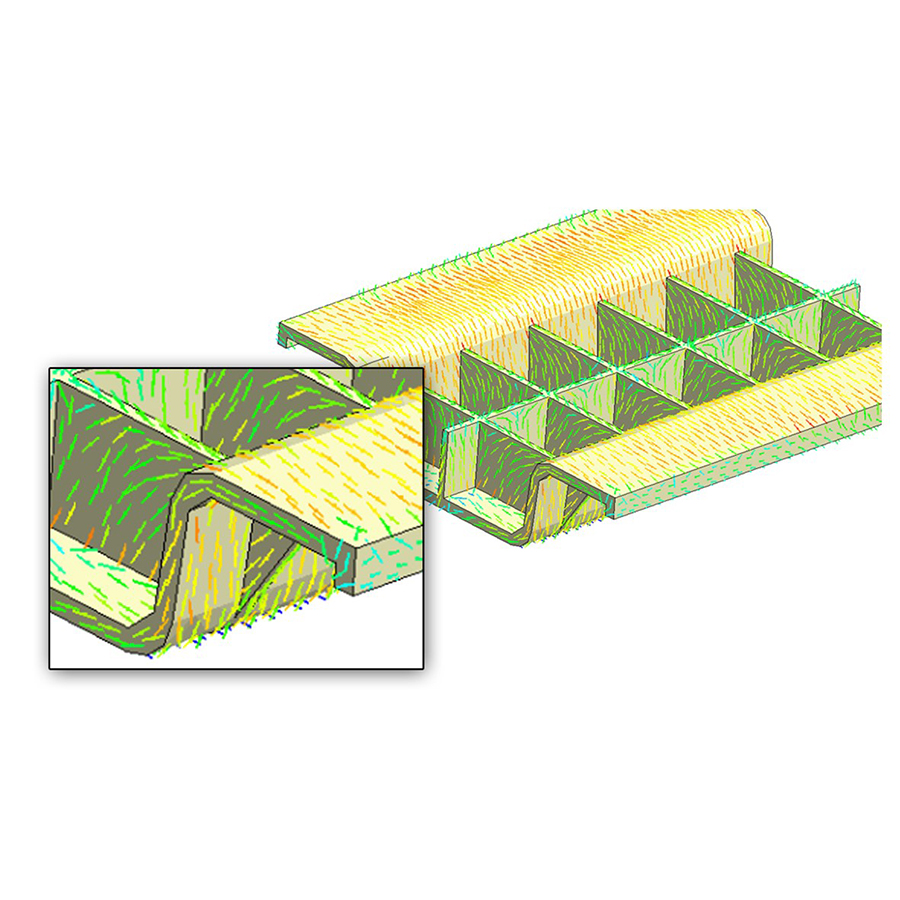
Chao-Tsai Huang, Rong-Yeu Chang, and Chia-Hsiang Hsu
International Polymer Processing (2018)
Understanding the effect of fiber orientation on mechanical properties is a primary consideration for long fiber-reinforced thermoplastics in automotive applications. In injection-molded parts, the classical Folgar-Tucker model has been used to predict the shell-core...
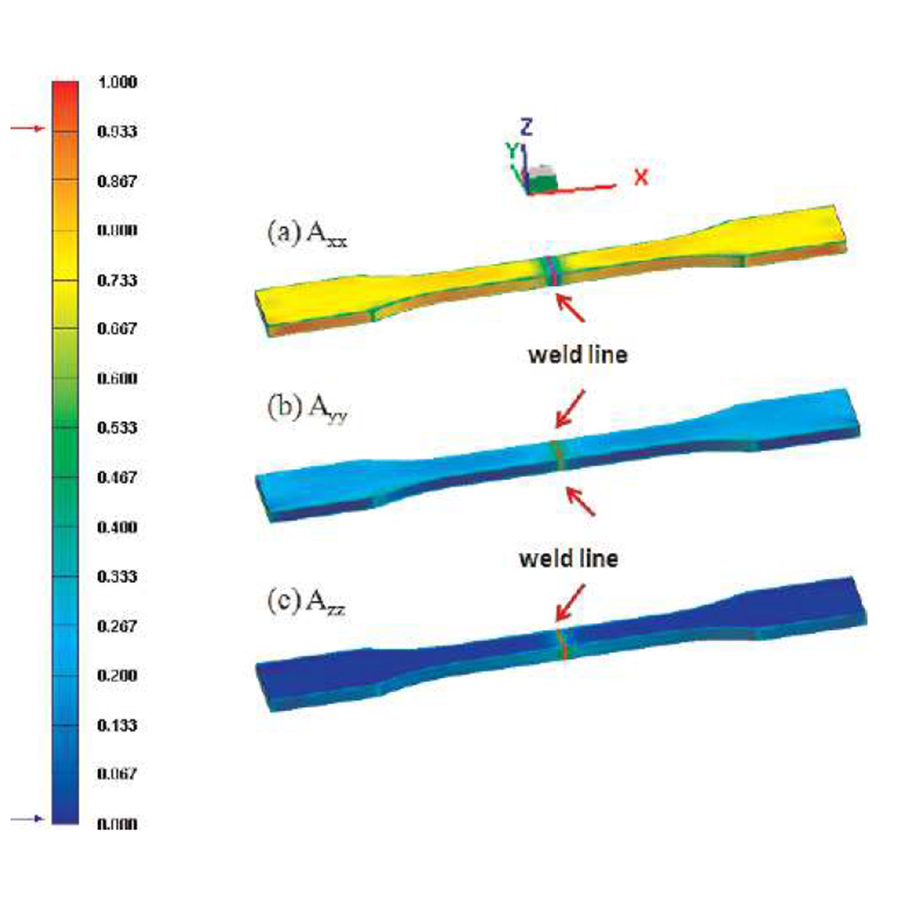
Huan-Chang Tseng, Rong-Yeu Chang, and Chia-Hsiang Hsu
International Polymer Processing (2018)
Fiber composites are the pinnacle of lightweight materials in the automotive industry. The orientation of the reinforcing fibers strongly affects the mechanical performance of the finished part. However, fiber orientation prediction with high accuracy is difficult for a complex flow...
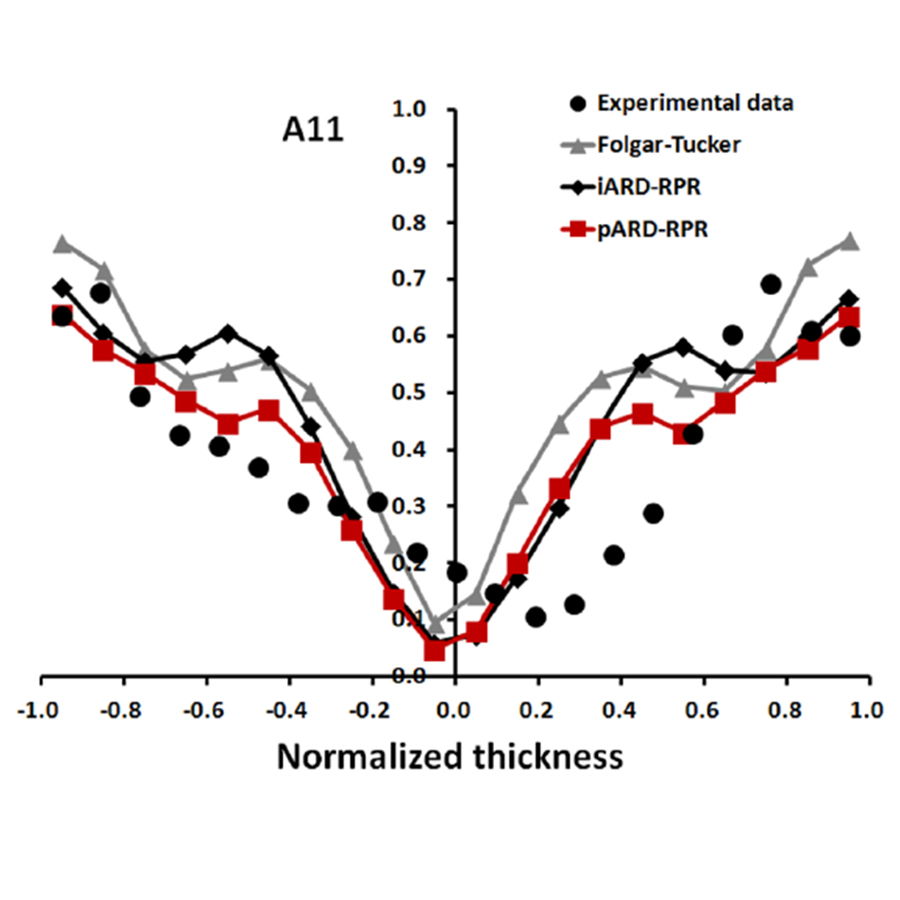
Huan-Chang Tseng, Rong-Yeu Chang, and Chia-Hsiang Hsu
Journal of Rheology (2018)
The Phelps-Tucker anisotropic rotary diffusion (ARD) equation constitutes an important development in relation to concentrated fiber suspension rheology and is significant in its ability to predict transient, flow-induced fiber orientation, especially for long fiber composites...
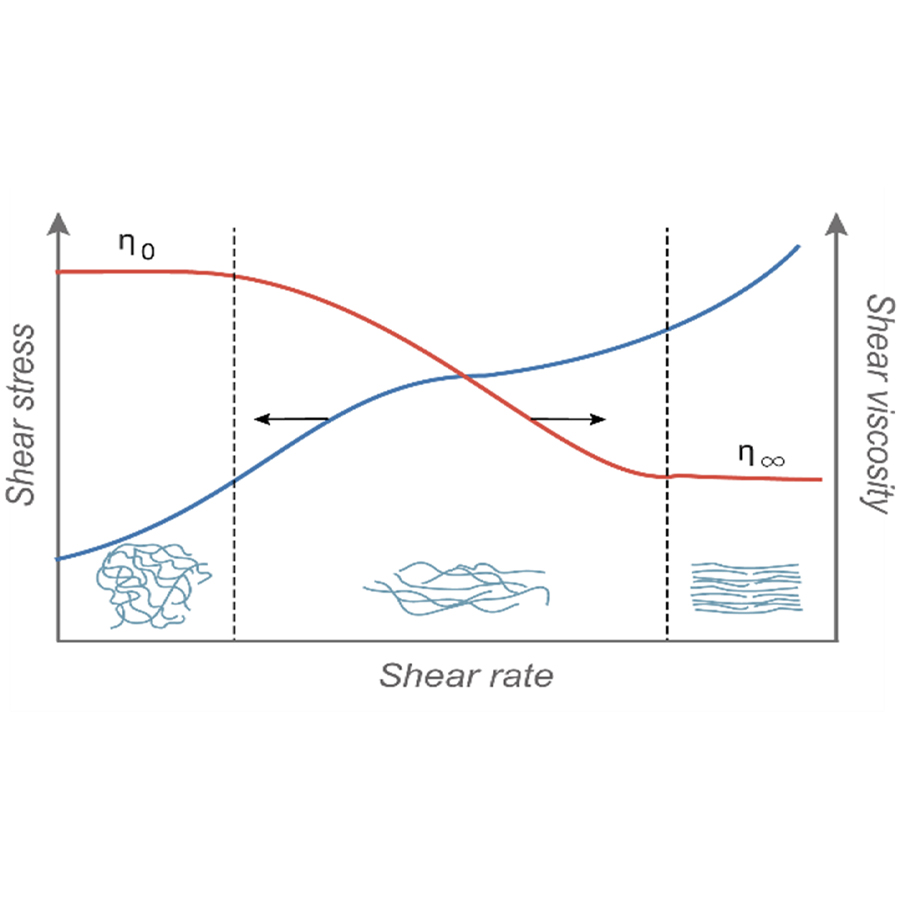
Huan-Chang Tseng, Rong-Yeu Chang, and Chia-Hsiang Hsu
Composites Part A (2018)
Fiber orientation distribution in injection molded fiber composites has an important shell-core structure.
Recently, significant theoretical orientation models, including RSC (Reduced Strain Closure), ARD
(Anisotropic Rotary Diffusion), and iARD-RPR (improved ARD and Retarding...
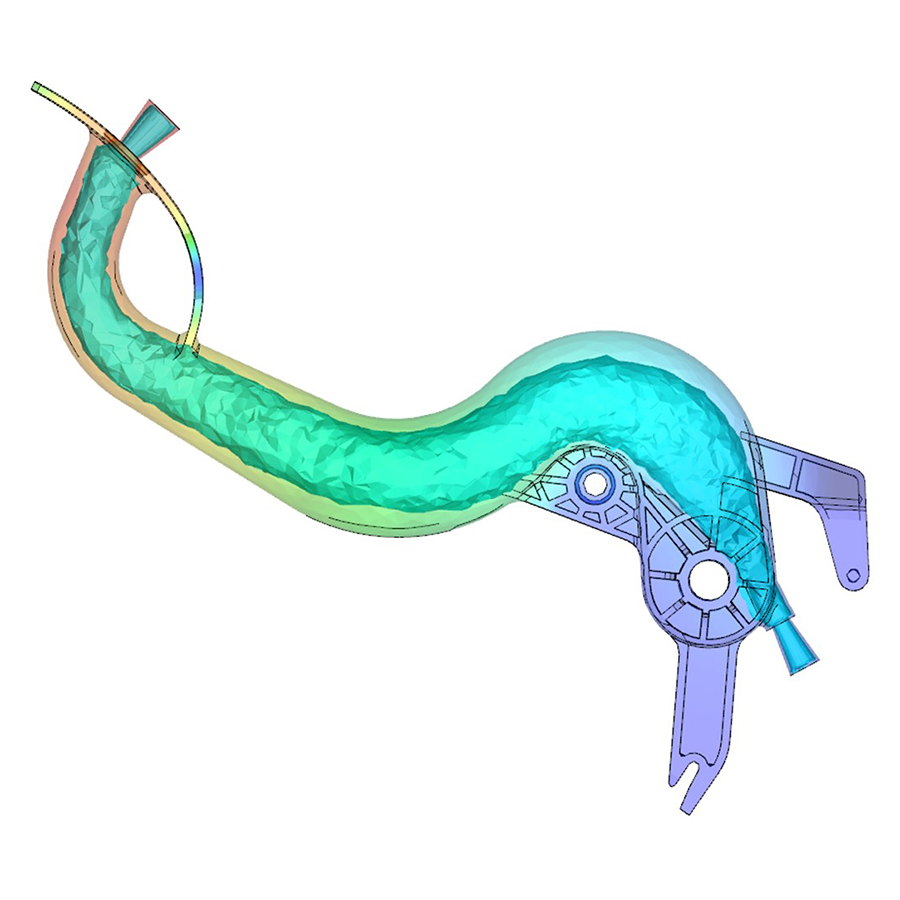
Chao-Tsai Huang, Huan-Chang Tseng
PES (2017)
In recent years, the use of long fiber-reinforced thermoplastics (LFRT) has become one of the most popular materials in lightweight applications. However, the microstructure of the fiber inside the plastic matrix is quite complex, making it hard to fully control the fiber effect in the...
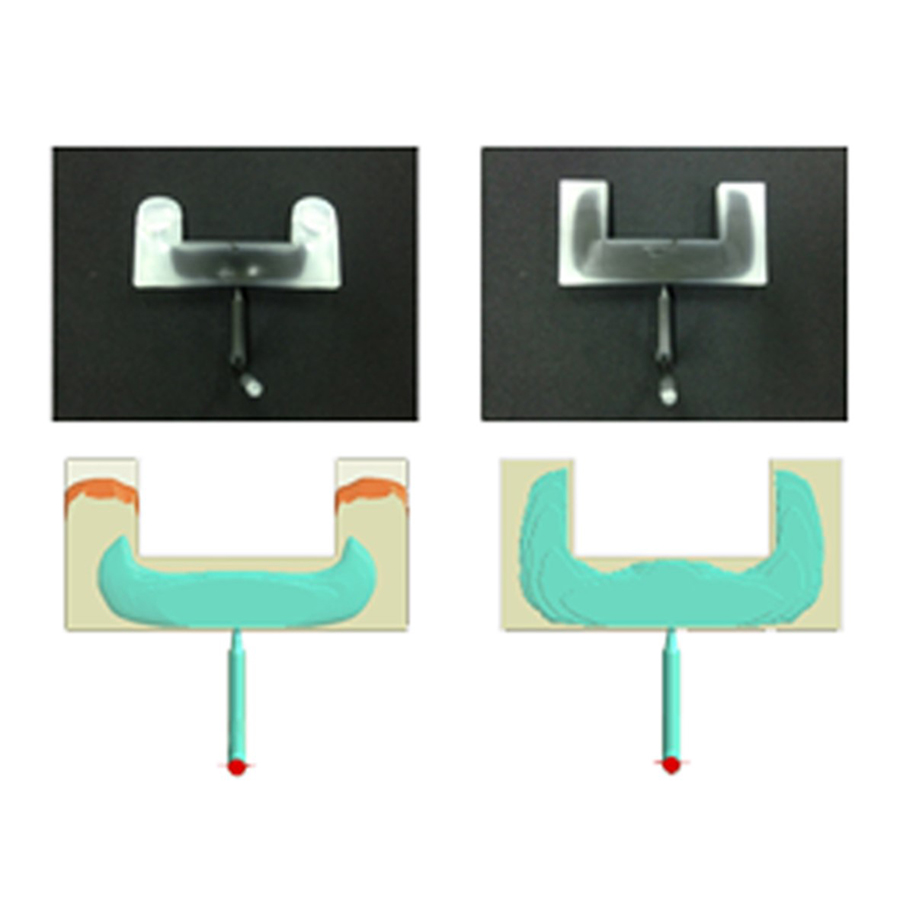
Chao-Tsai Huang
The International Journal of Advanced Manufacturing Technology (2017)
Co-injection molding and multi-cavity molding are common processes for plastic products manufacturing. These two systems are sometimes combined and applied in the manufacture of bifurcation-structure products. However, how the influential factors truly affect the...

Chih-Chung Hsu, Chao-Tsai Huang and Rong-Yeu Chang
JPE (2017)
The gas-assisted injection molding (GAIM) process is often adopted to compensate for shrinkage and improve part quality. However, gas penetrations consisting of primary and secondary penetrations will usually induce “fingering” behaviors, in which gas penetrates...

Huan-Chang Tseng, Rong-Yeu Chang, and Chia-Hsiang Hsu
Journal of Thermoplastic Composite Materials (2017)
The microstructures of injection-molded short fiber composites, involving fiber orientation and fiber concentration, strikingly influence flow behaviors and mechanical properties. Through the use of certain commercial software, reported numerical predictions of fiber orientation for the...
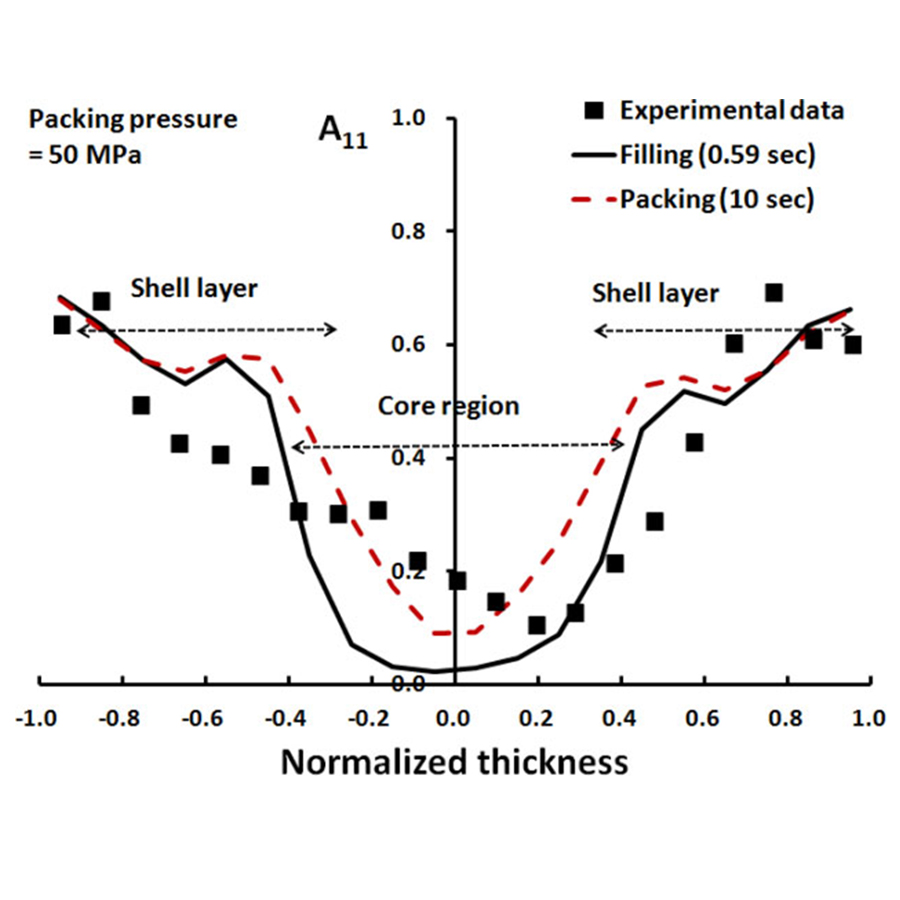
Huan-Chang Tseng, Rong-Yeu Chang, and Chia-Hsiang Hsu
Journal of Thermoplastic Composite Materials (2017)
During the packing or post-filling stage, a significant flow of polymer inside the cavity may result due to the compressibility of the polymer melt under the higher packing pressure of the injection molding process. In the meantime, the effect of the packing stage on the shell–core...

Chao-Tsai Huang, Huan-Chang Tseng
Polymer Engineering and Science (2017)
In recent years, the use of long fiber-reinforced thermoplastics (LFRT) has become one of the most popular materials in lightweight applications. However, the microstructure of the fiber inside the plastic matrix is quite complex, making it hard to fully control the fiber effect in the...
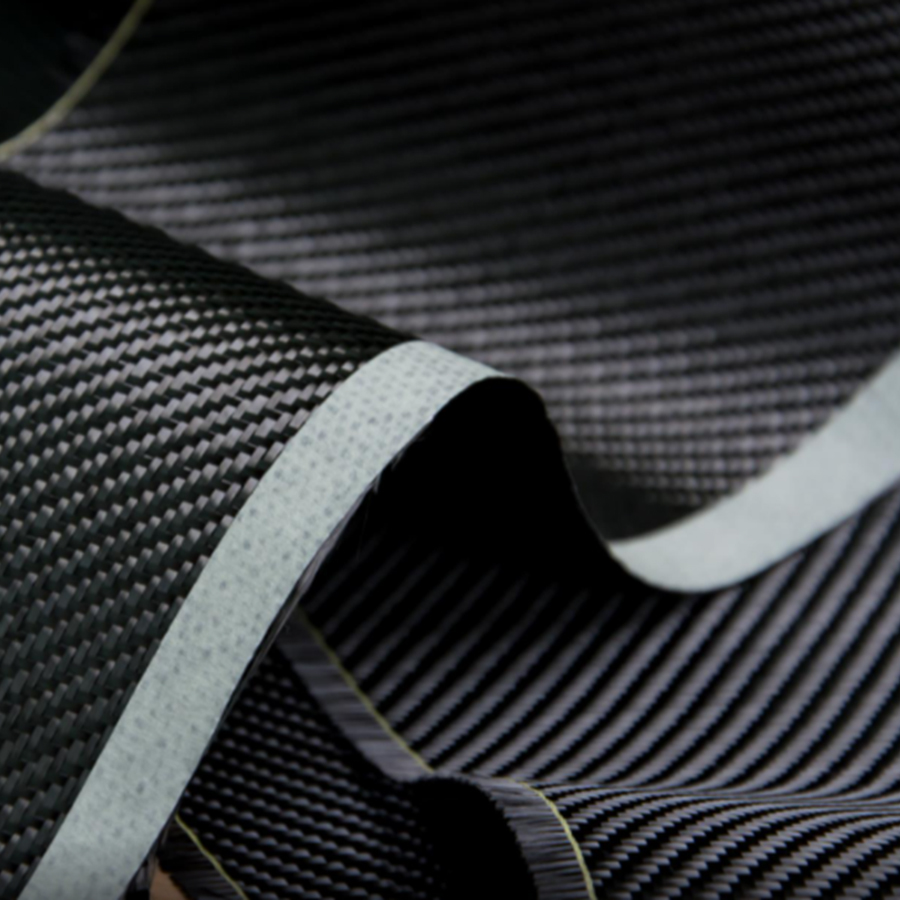
Huan-Chang Tseng, Rong-Yeu Chang, and Chia-Hsiang Hsu
Polymer Composites (2017)
The use of long carbon fiber-reinforced thermoplastic composites as lightweight automotive materials offers superior mechanical performance compared to glass fibers. However, the anisotropic fiber orientation distribution with shell–core structure is critical to determine...
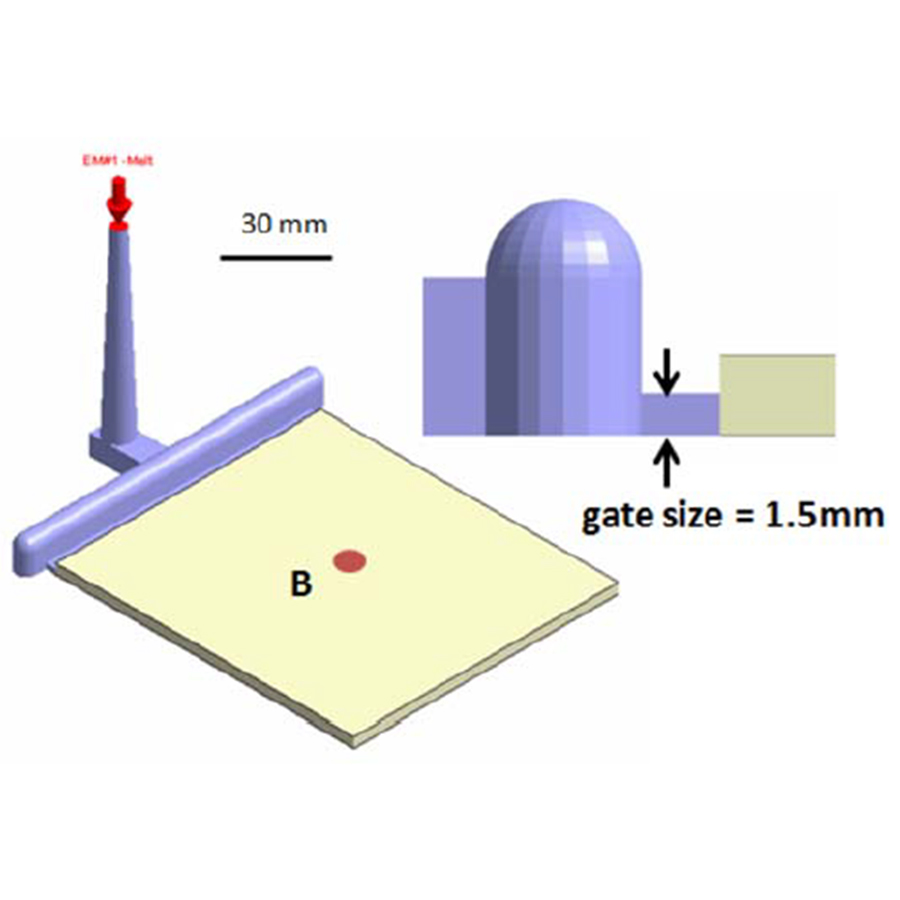
Huan-Chang Tseng, Rong-Yeu Chang, and Chia-Hsiang Hsu
Polymer Composites (2017)
Predictions of fiber orientation dependent mechanical properties are extremely important in the automotive industry for injection molded fiber-reinforced thermoplastic composites. Prior studies on three-dimensional (3D) numerical computations have not had satisfactory results...
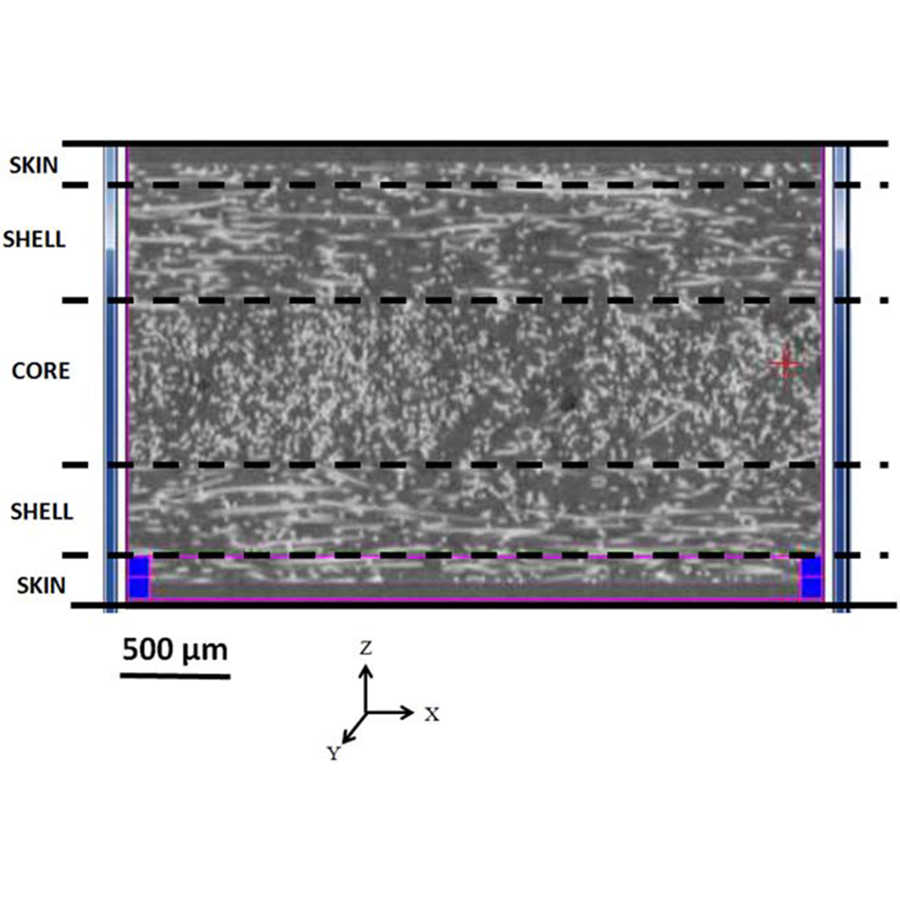
Huan-Chang Tseng, Massato Gato, Rong-Yeu Chang, and Chia-Hsiang Hsu
Polymer Composites (2017)
Mechanical performance of lightweight automotive materials made of long fiber-reinforced thermoplastic composites is potentially superior to that of short fiber. However, accurate prediction of fiber orientation is critical for determining reliable mechanical properties. Thus...
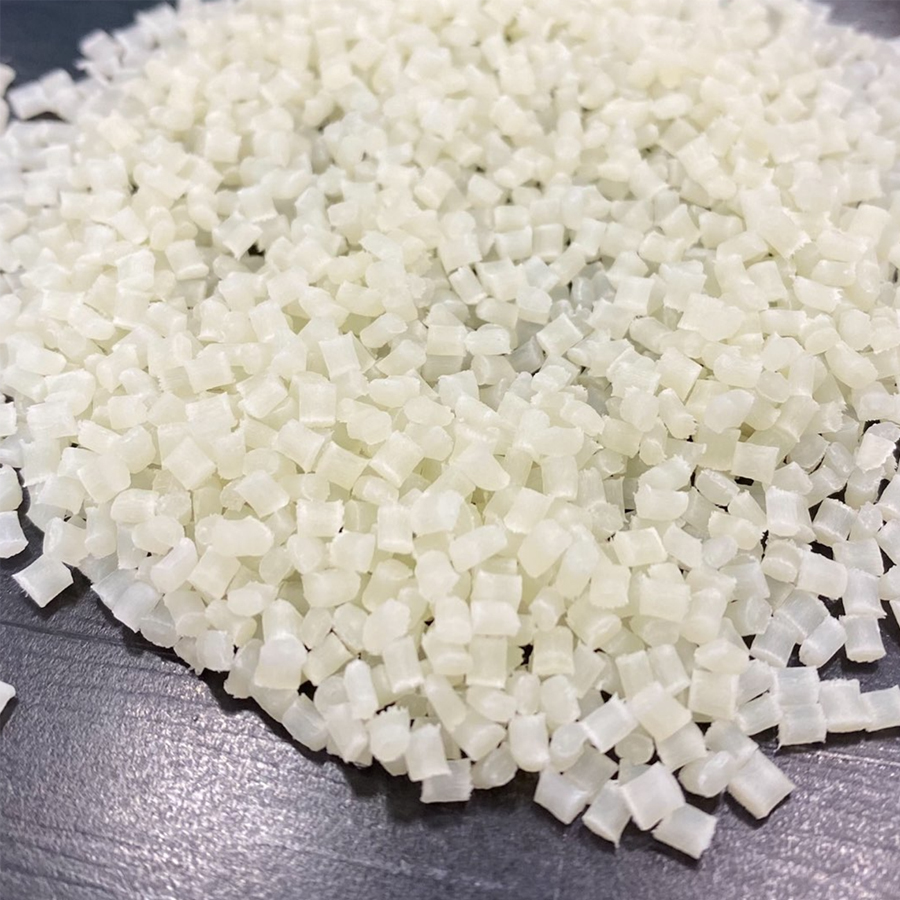
Huan-Chang Tseng, Rong-Yeu Chang, and Chia-Hsiang Hsu
Composites Science and Technology (2017)
requirement for improving mechanical performance and carrying out structural analysis for long fiberreinforced thermoplastics (LFRT) in injection molding. When using 3D-mesh computation, the orientation in the shell layer was predicted fairly well, but resulted in over-predictive...
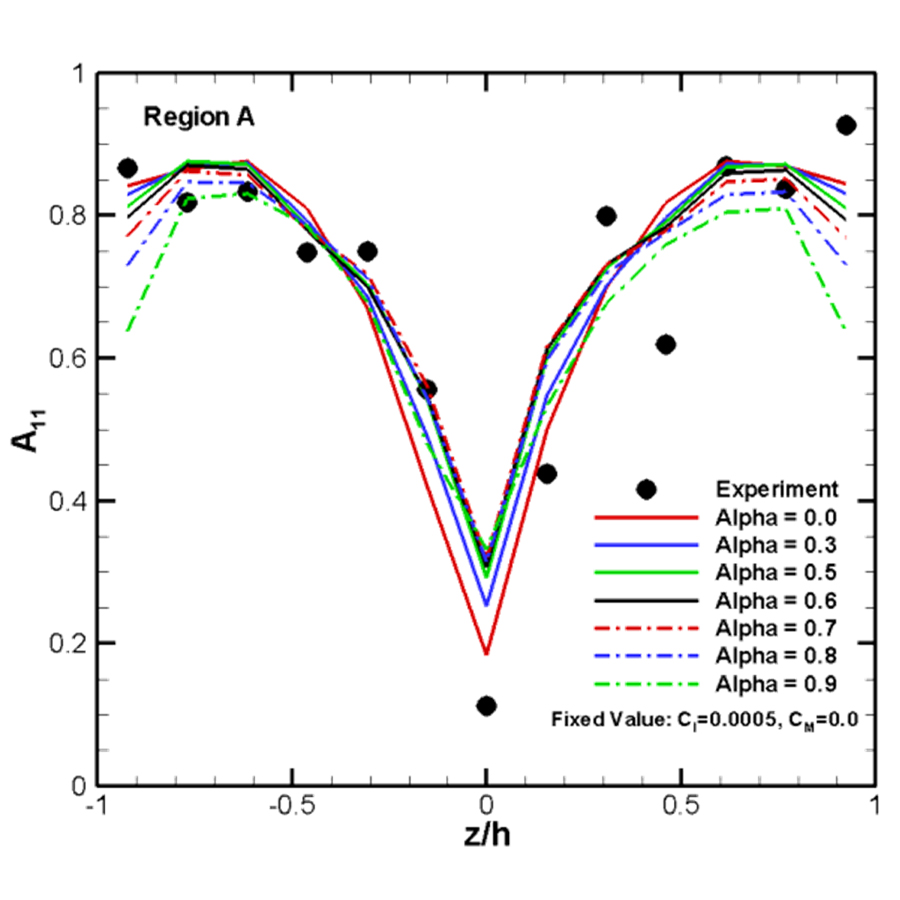
Huan-Chang Tseng, Rong-Yeu Chang, and Chia-Hsiang Hsu
Composites (2017)
Highly concentrated fiber suspensions exhibit complex rheological behaviors. There is a particular broader core region of the fiber orientation structure for fiber-filled parts in the injection molding process.
However, there is a long-running problem requiring an urgent...
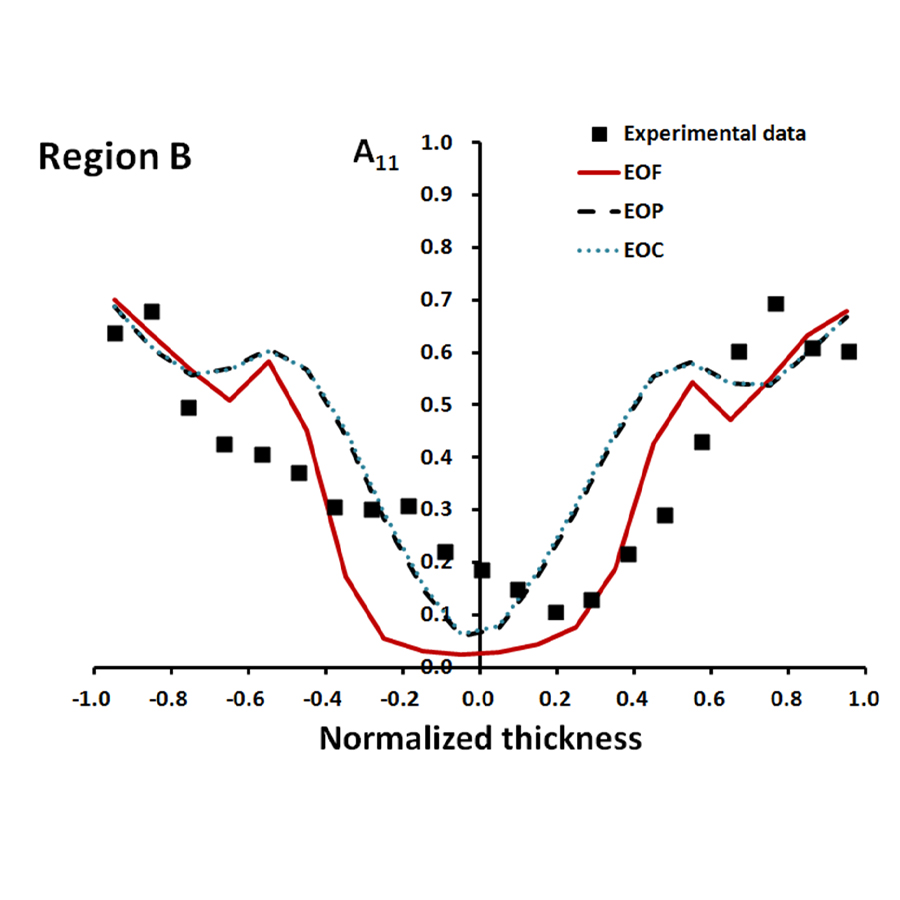
Huan-Chang Tseng, Rong-Yeu Chang, and Chia-Hsiang Hsu
International Polymer Processing (2017)
Long fiber-reinforced thermoplastic (LFRT) composites are a very important lightweight material for practical use by the automotive industry because their mechanical performance is superior to that of short fibers. Microstructures of LFRT products, including fiber orientation...
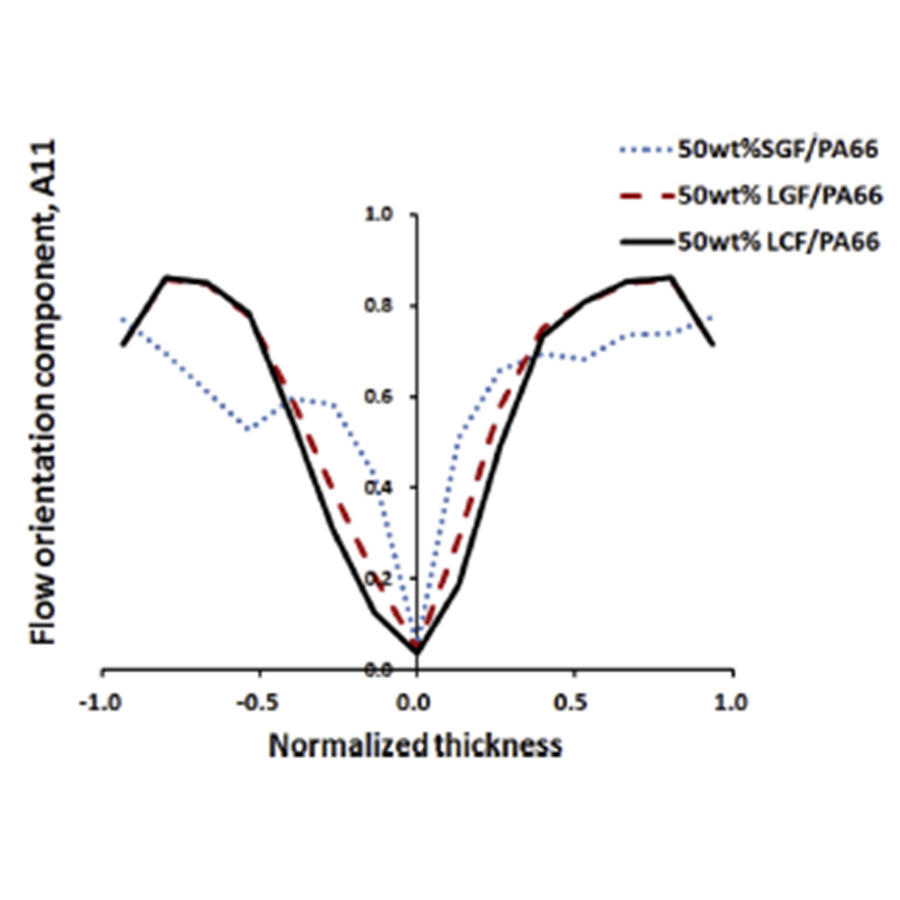
Huan-Chang Tseng, Rong-Yeu Chang, and Chia-Hsiang Hsu
Composites Science and Technology (2017)
Fiber reinforced polymer (FRP) composites offer exciting new possibilities for the green automotive industry, owing to their excellent mechanical properties, advantageous weight reduction and economical fuel consumption. In practice, accurately predicting fiber orientation...
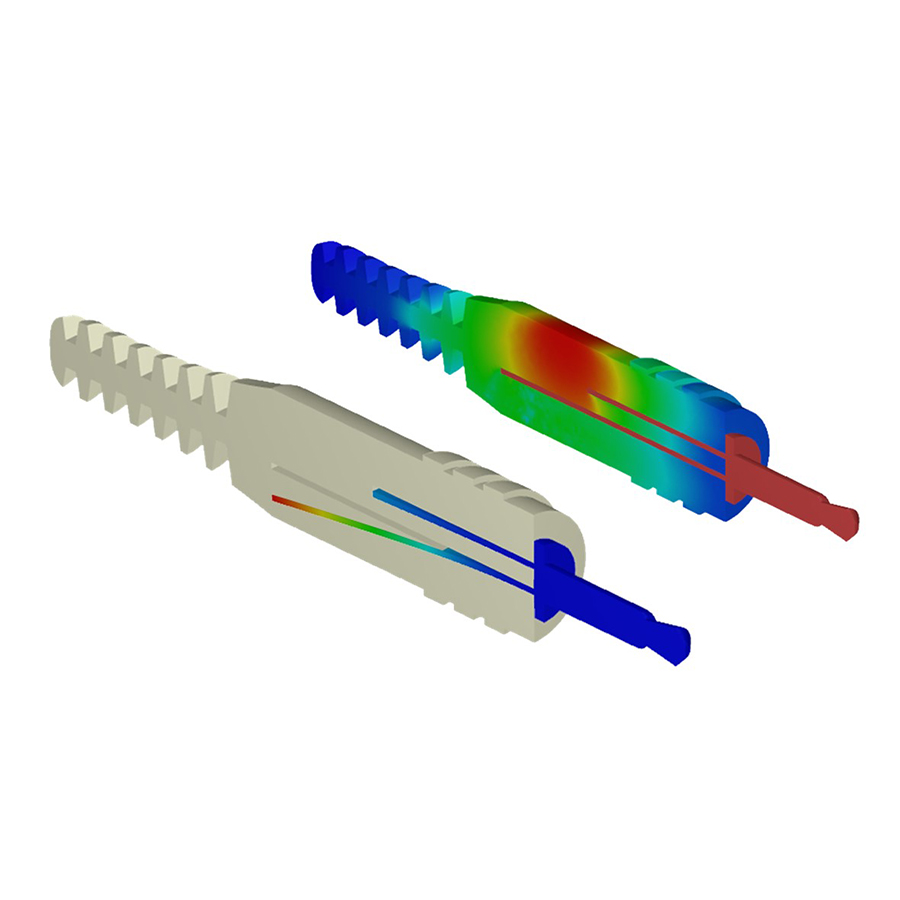
Chao-Tsai Huang, Che-Ping Lin, Shih-Po Sun, Shi-Chang Tseng and Rong-Yeu Chang
Materials and Product Technology (2016)
Multiple component moulding (MCM) is one of the great methods to fabricate the modern injection products. Due to many procedure combinations, it is very difficult to know the detailed process. Besides, because of its complicated nature and the unclear physical mechanism...
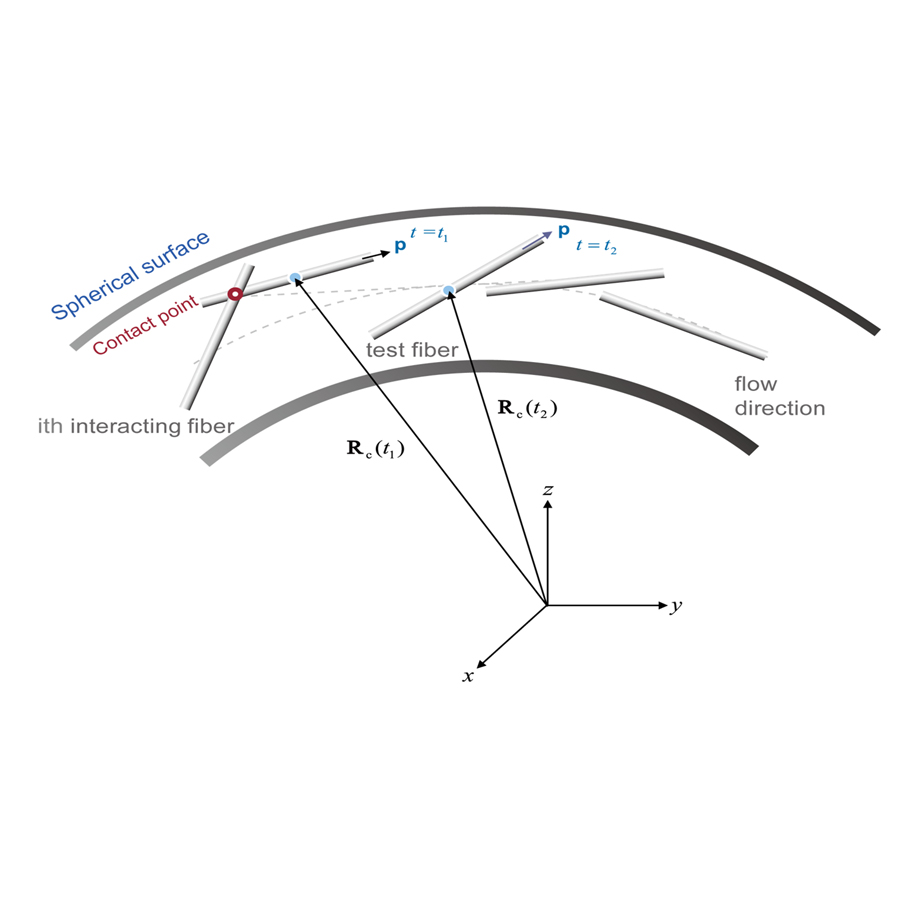
Huan-Chang Tseng, Rong-Yeu Chang, and Chia-Hsiang Hsu
Journal of Rheology (2016)
The improved anisotropic rotary diffusion (iARD) model was previously regarded as a suitable description of anisotropic orientation states for long fibers in concentrated suspensions. However, the iARD tensor does not pass the classic rheological rule of Euclidean objectivity...
2011-2015
2011-2015

Chao-Tsai Huang, Huan-Chang Tseng, Jiri Vlcek and Rong-Yeu Chang
Materials Science and Engineering (2015)
Due to the high demand of smart green, the lightweight technologies have become the driving force for the development of automotives and other industries in recent years. Among those technologies, using short and long fiber-reinforced plastics (FRP) to replace some metal...

Chao-Tsai Huang, Jackie Yang, Rong-Yeu Chang
AIP Conference Proceedings (2015)
Co-Injection Molding and multi-cavity molding are very common processes for plastic manufacturing. These two systems are sometimes combined and applied to some structure products. The core penetration and flow balance control problems are very difficult to...
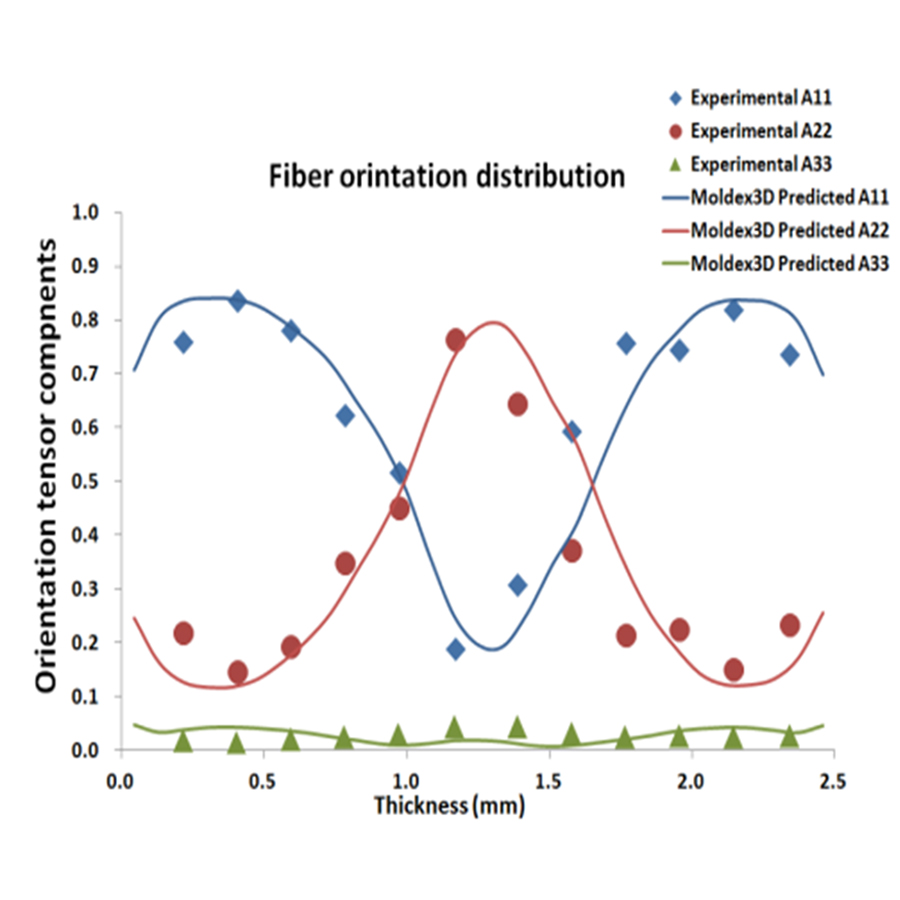
Peter H. Forss, Huan-Chang Tseng, John Snawerdt, Yuan-Jung Chang2, Wen-Hsien Yang2, Chia-Hsiang Hsu
Polymer Composites (2014)
In the automotive industry, glass-filled thermoplastics are used in air intake manifolds, radiator tanks, and many other parts. However, widespread application of glass-filled thermoplastic materials has been limited in many cases by the inability to accurately predict performance...
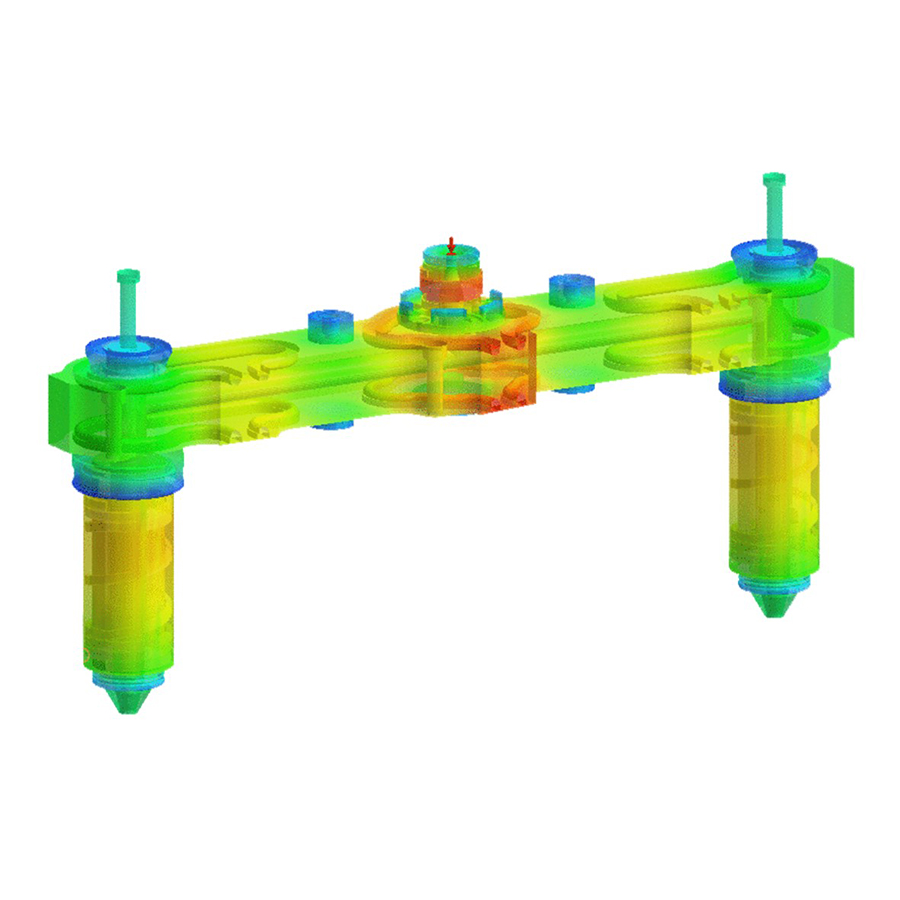
Tzu-Chau Chen, Chao-Tsai Huang, Yan-Chen Chiu, Wei-Da Wang, Cheng-Li Hsu, Chen-Yang Lin, and Lung-Wen Kao
International Journal of Precision Engineering and Manufacturing (JPEM) (2013)
Runner system plays a very important role in injection molding process. A quality runner design is helpful in improving product qualities and saving material. However, traditional cold runner systems have certain inherent issues. Moreover, poor product cosmetics are commonly seen...
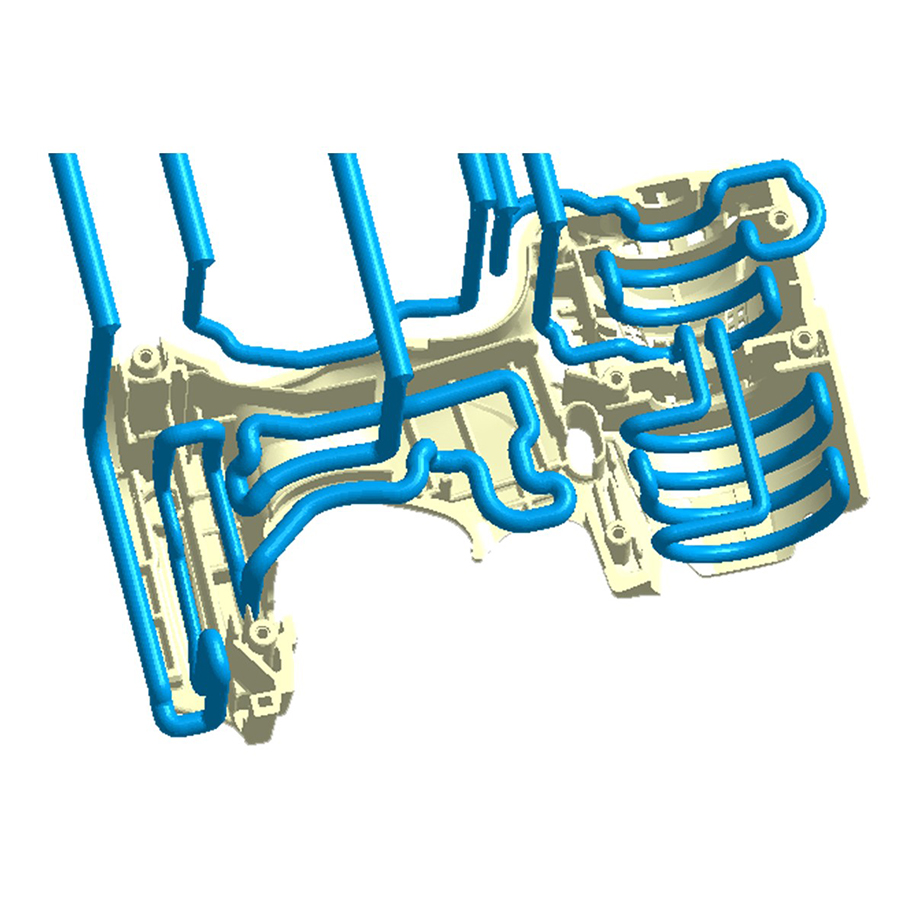
Fu-Hung Hsu, Chao-Tsai Huang, Rong-Yeu Chang
APEM Journal (2013)
Most advanced technologies developed nowadays focus on issues such as minimizing manufacturing cost and improving product quality. Cooling system design is one of the most critical factors to reduce cycle time. Conformal cool-ing is the concept which can reduce...

Huan-Chang Tseng, Rong-Yeu Chang, and Chia-Hsiang Hsu
Journal of Rheology (2013)
The standard Folgar-Tucker (FT) orientation equation is a useful method for theoretically determining isotropic fiber orientation in concentrated suspensions. However, when quantitatively compared with related experimental observations, this equation demonstrates...

Chao-Tsai Huang, I-Sheng Hsieh, and Cheng-Han Tsai
International Polymer Processing (2011)
To eliminate surface defects and improve the quality of molded parts, increasing the mold temperature is one of the solutions. Using high mold temperature can eliminate weld lines, reduce molding pressure, residual stress and clamping force and improve part surface quality...